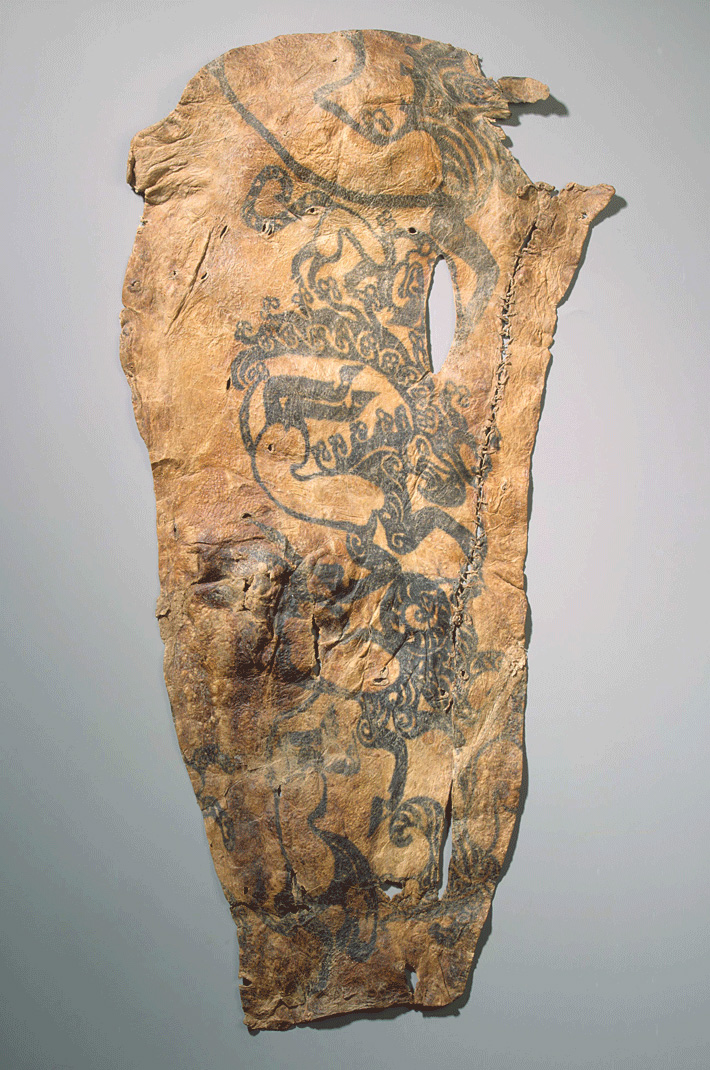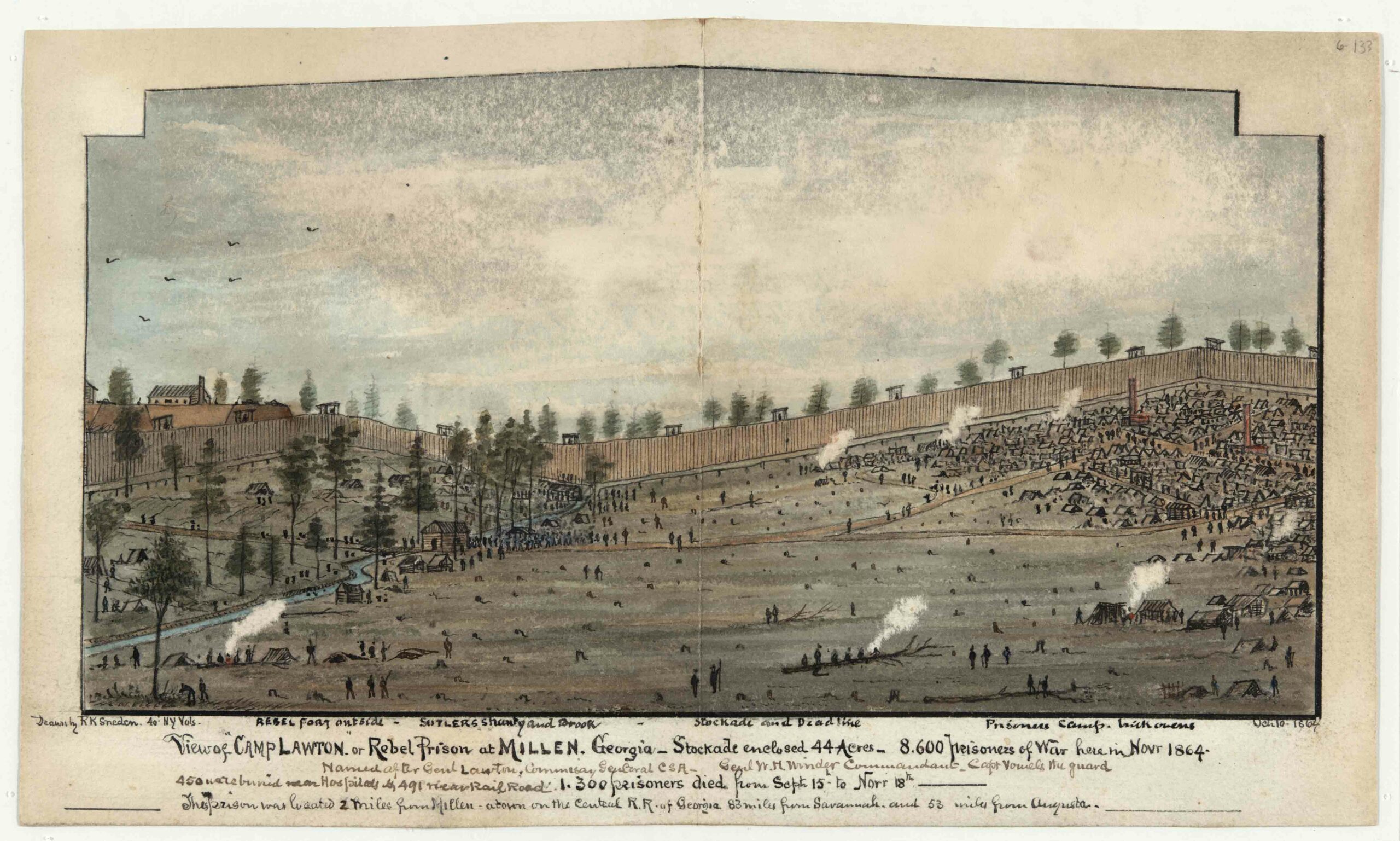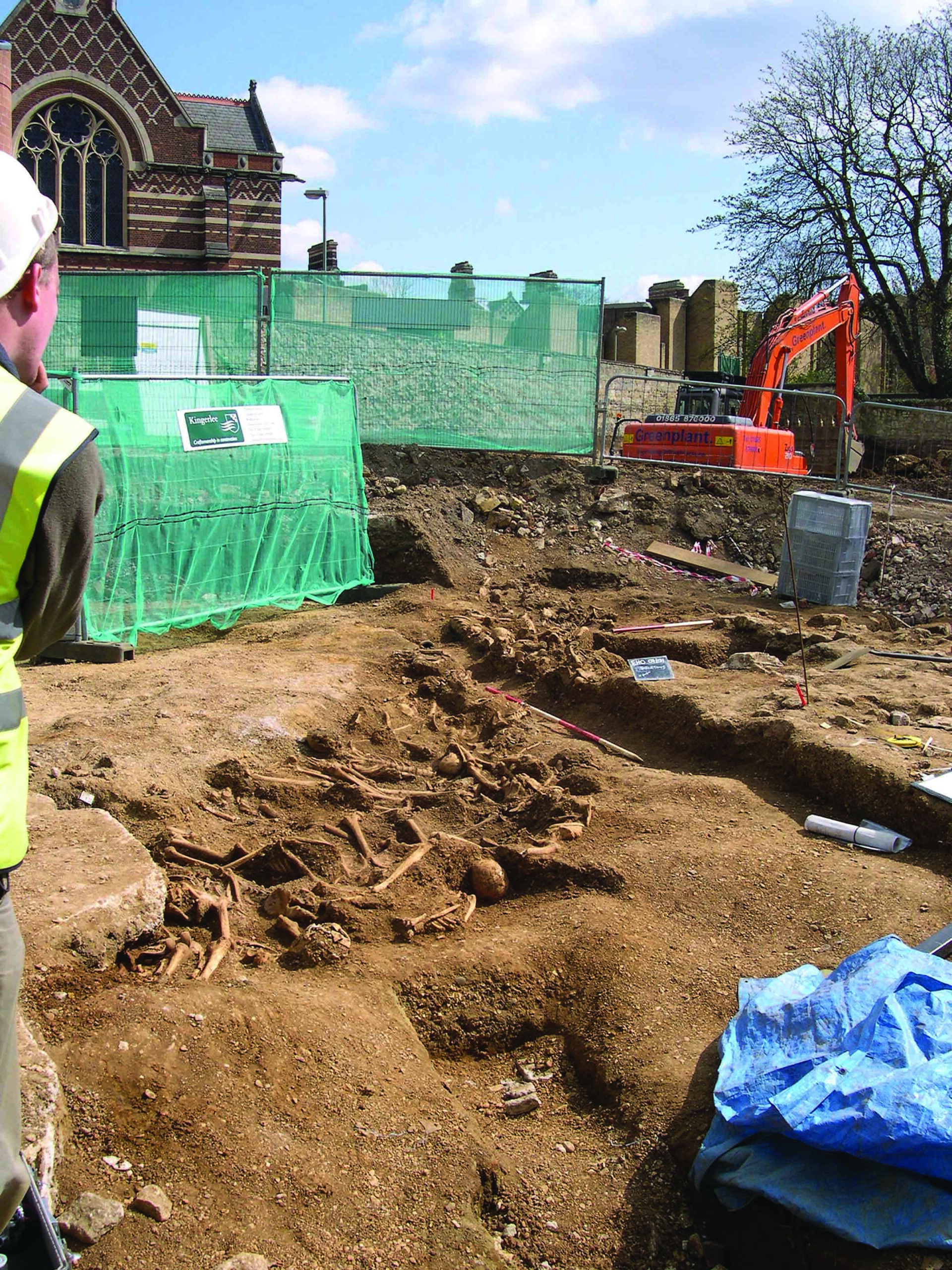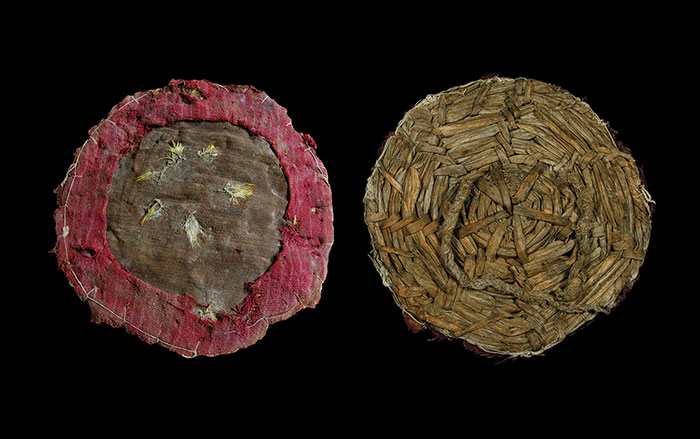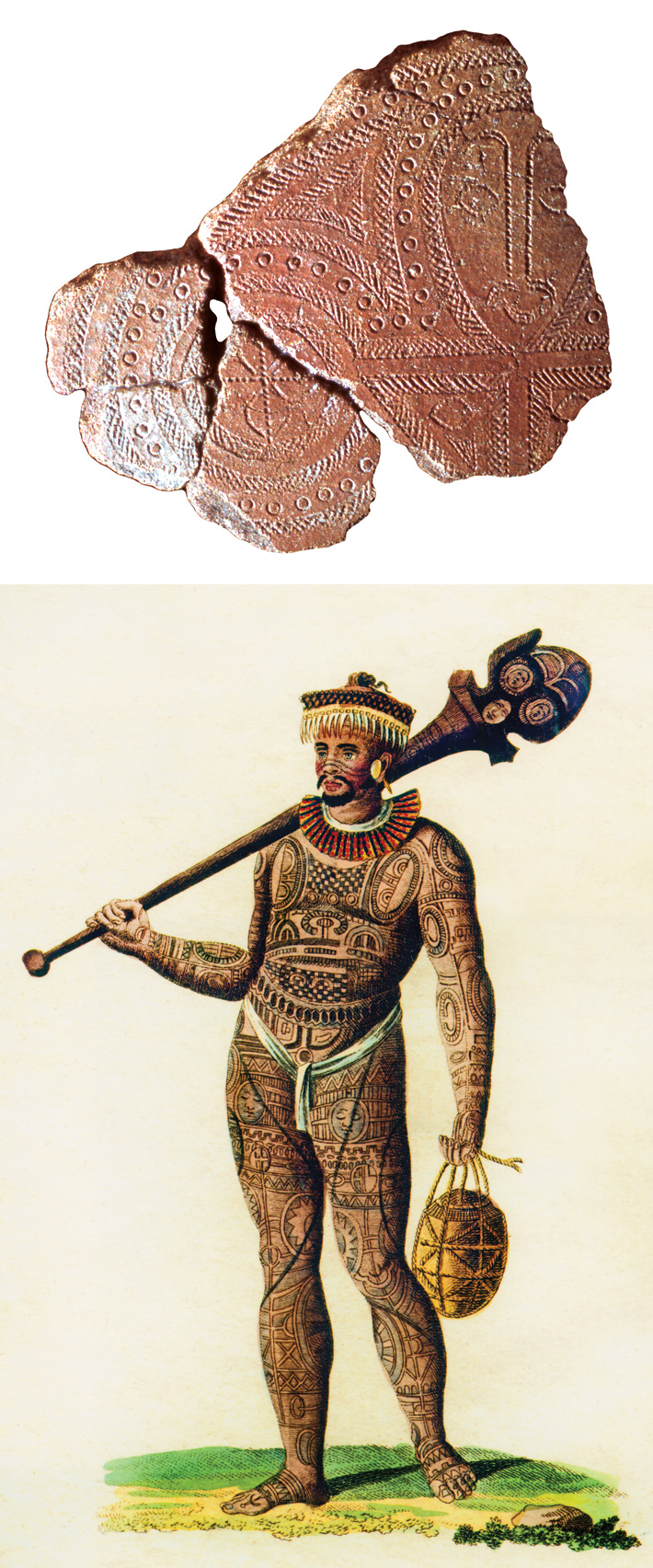
Culture: Lapita
Location: Oceania
Date: ca. 1000 B.C. (fragment); 1843 (engraving)
Captain Cook was the first to use the verb “tattoo” in English in 1769, when he described the Tahitian art of tatau in his diary. Now people all around the world bear Polynesian-inspired tattoos, but the first to wear those famous designs were likely the Lapita, who lived from around 1500 to 500 B.C. and are the ancestors of many of today’s Pacific peoples. No direct evidence of Lapita tattooing exists, but University of California, Berkeley, archaeologist Patrick Kirch says that the intricate designs they incised on their pottery resemble tattoo motifs that are still used today and were made by the same toothlike implements that can still be used to create tattoos. “These vessels were being decorated the same way as the body and might represent ancestors,” says Kirch, who thinks these “tattooed pots,” which were thick and crudely made, were probably intended for display during ceremonial occasions. The Lapita used slender, undecorated pottery for utilitarian purposes, such as storing water. Kirch notes that in ethnographic accounts of Oceanic societies, women were responsible for making pottery and men were responsible for tattoos. “It’s possible the Lapita women were creating the skillfully made pottery that actually had to be used, and men were making terrible pottery and decorating it with tattoos.”



